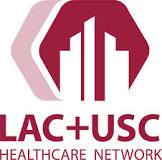Expectant Management Versus Laser Treatment of Monochorionic Twins With Severe Selective Intrauterine Growth Retardation And Absent or Reverse Diastolic Flow in the Umbilical Artery
| Status: | Archived |
|---|---|
| Conditions: | Women's Studies |
| Therapuetic Areas: | Reproductive |
| Healthy: | No |
| Age Range: | Any |
| Updated: | 7/1/2011 |
| Start Date: | May 2007 |
| End Date: | May 2013 |
Randomized Clinical Trial: Expectant Management vs. Laser Treatment of Monochorionic Twins With Severe Selective Intrauterine Growth Retardation And Absent or Reverse Diastolic Flow in the Umbilical Artery
Intrauterine growth retardation (IUGR) occurs in approximately 3 to 10% of singleton
pregnancies, in 9.1% of all twins and 9.9% of monochorionic twins. IUGR in monochorionic
twins typically affects only one of the fetuses (selective IUGR or SIUGR). Spontaneous
demise of the SIUGR twin can occur, and may result in concomitant demise (up to 40% risk) or
severe neurologic handicap (up to 30% risk) of the other twin. These complications result
from exsanguination of the appropriately grown (AGA) twin into the demised SIUGR twin
through placental vascular communications.
Because the adverse effects to the AGA twin of the spontaneous demise of the SIUGR twin are
mediated through placental vascular anastomoses, we have proposed obliterating such
anastomoses via endoscopic fetal surgery. We have developed a technique that allows us to
identify the vascular anastomoses present in monochorionic placentas. Briefly, deep AV
communications are identified on the surface of the placenta by noting that the terminal end
of the artery of one of the fetuses does not have a corresponding returning vein to the same
fetus. We have speculated that the separation of the circulations may be of benefit in
monochorionic twins affected by SIUGR by preventing the adverse effects that may result from
the spontaneous demise of the IUGR twin. Our goal is to evaluate with a randomized clinical
trial the outcome of SIUGR managed either expectantly or with SLPCV.
Study procedures will begin with confirmation of the diagnosis and screening criteria at the
Qualified Clinical Center. The patient will sign the appropriate consents and then be
randomized to her treatment group. Enrollment data will be submitted to the research
coordinator in Coordinating Center in Tampa. Expectant management patients will be treated
by the referring physicians. Laser patients will be treated at Coordinating Center in Tampa
General Hospital or qualified laser center. They may return to the referring center for
follow-up. After delivery, outcome data will be sent to the research coordinator in
Coordinating Center in Tampa.
We found this trial at
2
sites
Los Angeles County-USC Medical Center The origins of LAC+USC Medical Center date back to 1878,...
Click here to add this to my saved trials
Click here to add this to my saved trials
